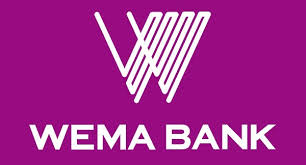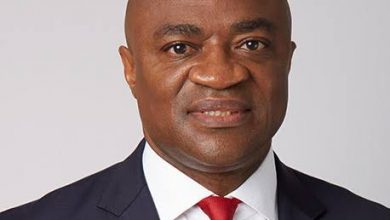Wema : A Bank With More Resilience On Yesterday , Less Foresight On Tomorrow

The fear over the speculation by some analysts that the improvements recorded by Wema Bank in its 2023 full year result might not be sustainable in the current financial year is not the only issue bordering some stakeholders of this bank now . As in the past , the real issue putting the celebration on hold remains the incremental mode of its value delivery which could be pinned down to this corporate entity’s strategic choice that focuses more on resilience for yesterday but less foresight for tomorrow.
This fear over this strategic choice may not be farfetched .When a company is in this mode , it devotes too much energy to preserving the past and not enough to creating the future ; it takes industry structure as a given and seldom challenging the prevailing conventions . This corporate attitude ,an attribute of laggards in the corporate world , has kept Wema Bank on the treadmill for years and is, indeed , raising serious concern .
The concern raised by its stakeholders may not be unexpected or out of place particularly when one considers the fact that this bank is one of the oldest and has remained a mere dot on the map of the banking industry in Nigeria ..Yet. it shows no sign to change its current unimpressive status.
The fact is that it is not impossible to change this status when the right leadershipis in place . To move away from its current incremental value delivery under which its management is currently hiding , the submission from analysts has always been for the bank to be transformed to an entity that is less resilient for yesterday with more foresight for tomorrow. Jim Ovia ,the current chairman of the Board of Directors of Zenith Bank, is one of the few leaders in Nigeria that re-wrote the rules of the game to achieve an industry leadership for his bank .
Wema Bank ,indeed, needs a transformative leadership that could identify and accomplish heroic goals in tomorrow’s marketplace ; the bank needs a leadership that could make commitments to particular skill areas far ahead or in advance of the emergence of specific end product markets.
Such commitments are usually made by managers or leaders with foresight ; leaders who spend less time worrying about how to position a firm in existing competitive space and more time creating fundamentally new competitive space and perceive the race to competition as a race to build competencies not simply to gain immediate market share.
It needs a leadership that could ease the tension between competing today and clearing a path toward leadership in the future. .This is imperative for this bank to be taken seriously by investors
Unfortunately , Wema Bank has not been able to change from this uninspiring mode . Its inability to do this could pinned down to the quality of its leadership . Wema Bank , from all indications , has only come under dilettantes and merely intellectually curious leaders . An analyst who spoke to this medium believed, “the fate of this bank could only be reversed by those that are not content to follow, who desire to rewrite the rules of the game ,unafraid of orthodoxy, more inclined to build than to cut ,those concerned to make the difference than making career and those who absolutely committed to staking out the future first .”
But Wema Bank has not been lucky to have such a leadership with the above sterling qualities .Consequently, the above initiatives go unattended to simply because its senior managers have failed to admit to themselves and to their employees, that they are less fully in control of the bank’s future , or that what they know today—the knowledge and experience that justify their position in the corporate pecking order— is irrelevant or wrong-headed for the future.
The negative effect of the above laxity is that the urgent has continued to drive out the important while the future has remained largely unexplored with the capacity to act, rather than the capacity to think and imagine, becoming the sole measure of leadership. Moreover , what has been occupying its senior management’s attention in two words are restructuring and re engineering.
However , while downsizing and core process redesign ,the key attributes of restructuring and reengineering, are legitimate and important tasks, they have more to do with shoring up today’s businesses than creating tomorrow’s industries. Neither is a substitute for imagining and creating the future or will ensure continued success if the bank fails to regenerate its core strategies. Any company that succeeds at restructuring and re engineering, but fails to create the markets of the future, will find itself on a treadmill, trying to keep one step ahead of the steadily declining margins and profits of yesterday’s businesses.
To affirm a company operating in past with poor foresight just look around the profile of the initiatives launched recently in such an organization ,issues that are preoccupying senior management. criteria and benchmarks by which its progress is being measured, record of its new business creation, dreams and fears on the faces of its employees as well as the ability or inability to shape that future and regenerate success again and again in the years and decades to come.
Wema Bank is ,indeed, a case study of a treadmill bank preserving the past more to survive with few initiatives for creating the future . The historical comparison standard by which its management measures its progress is the first confirmation of this .Though this standard which dwells on how an organization is improving over time or in relation to previous years has its benefit , however , the danger in it is that it has led to complacency of its management. The management of Wema Bank is not oblivious of this danger , however, this is the only standard that shows this bank is performing and justifies the capability of its management.
But it is the rate of improvement compared with that of competitors that is important. This is more so because some valuable insights about performance standards can be gleaned by looking at the comparative perspective of other organizations in the same industry or sector . This however, does not favour the interest of Wema Bank as it exposes the management performance relative to its competitors.
Truly ,when the bank’s performance is juxtaposed with other tier 2 banks or the best in class indices wherever they are found ,Wema Bank ,one of the oldest banks , is exposed to be a hopelessly to be on the treadmill .
On the profile of initiatives recently launched, though the recent recapitalization through which the bank raised N40bn through a Rights Offer in December 2023, which, if included, would raise the share capital to N55.13bn could be considered a high profile issue in the recent time , analysts still believed , the exercise is belated after years of passivity in this direction .
Moreover , deeper concerns are raised by this bank’s less inspiring record of new business creation, more fears than dreams on the faces of its employees and its inability to shape that future and regenerate success again and again in the years and decades to come . The corporate wings of this bank have been clipped by the size of its capital and absence of ambitious leaders with enough muscles to change its current its status.
Consequently, when you peep deep into its operatiions what stare in the face are some unimpressive corporate identities which manifest in a bank devoting too much energy to preserving the past and not enough to creating the future that could be pinned down to a senior management that lacks of clear and broadly shared understanding of how the industry may be different ten years in the future , whose “headlights” fails to shine farther out than its competitors and whose point of view about the future is not competitively unique.
The negative impacts of the above laxity over years are usually very enormous . The bank has remained at the backseat ; it has neither gained any tangible influence in setting the new rules of competition within its industry or in terms of defining new ways of doing business, building new capabilities, and setting new standards of customer satisfaction over the years . In other words , it has lost the position of a rule-maker and become completely a rule-taker within its industry because of its less intent on challenging the industry status quo than protecting it.
This should not spring any surprise since its senior management has not been fully alert to the dangers posed by new, unconventional rivals and has not understood their potential threats to its current business model. Moreover, when senior executives do not possess a keen sense of urgency about the need to reinvent the current business model or when the task of regenerating core strategies is not receiving as much top management attention on the task of re engineering core processes, a corporate entity like Wema is not expected to change its spot from the treadmill.
Its inability to pursue growth and new business development with as much passion as it is pursuing operational efficiency and downsizing or to increase the percentage of its improvement efforts that focuses on creating advantages new to the industry better than the percentage that focuses on merely catching up to our competitors is believed to be below expectations . These are the other negative corporate attitudes of this bank working against its leadership dream .
Consequently ,what is driving its improvement and transformation agenda has remained the actions of its competitors rather than its own view of future opportunities just as its transformation agenda has been less offensive and more defensive. This scenario is expected in a bank that is more under maintenance engineers keeping today’s business humming along, than architects imagining tomorrow’s businesses.
At the end of the day. the balance between hope and anxiety in the bank , between confidence in its ability to find and exploit opportunities for growth and new business development and concern about its ability to maintain competitiveness in its traditional businesses ,between a sense of opportunity and a sense of vulnerability, both corporate and personal has remained more of fear than hope .
As indicated earlier to quit the status of a laggard and stop parrading historical data that just compare its performance in one year with the other year , Wema Bank needs fundamentally a leadership with capability to transform this bank by fundamentally changing its organizational structure ,core product or service ,portfolio,systems, processes, people—the way employees work and technology to upturn its treadmill status.
The above initiative is expected to enable it to generate significant improvements in revenue growth, cost reduction, and/or customer satisfaction as merely short-term operational improvements do not augur well for a sustainable transformation. No doubt, it needs a long-term growth strategy in place and a leadership that could challenge the foundations of its business model




